What’s The Story, Muthur?
To the point, tabletop gaming
Yo-Ho-Ho-Ho and a Collection of Off-Brand Pirates
As you know, I like pirates, pirates are cool - and I have a Pirate Borg game that I'm building up to running. Well, it occurred to me a few weeks ago that it might be fun to grab some pirate LEGO sets, and maybe even find a use for them in game?
By JimmiWazEre
Opinionated tabletop gaming chap who’s been exceptionally busy this month.
TL;DR:
LEGO sets are pricey and out of print, but LEGO-compatible pirate ships from AliExpress scratched my itch for Pirate Borg minis at a fraction of the cost. The legality’s murky, the quality’s decent, and they’re undeniably cool.
Disclaimer:
This post discusses unlicensed, third-party brick sets purchased on AliExpress. LEGO® is a trademark of the LEGO Group, which does not sponsor, authorise, or endorse this product.
Consequently, no affiliate links or monitisation is present on this post as it just don't feel right.
Who’s a Pretty Boy Then?
Alrighty then, apologies for not keeping up with my usual output, I've been burning the candle at both ends this month by dedicating all my free time to helping out a mate.
I'm so tired that it's not exactly left me with enough beans to be creative, and I know that my commitment to the blog this month has suffered because of it.
So, bearing that in mind, today's post is gonna be a quick one, but hopefully you'll agree it's cool and worthwhile.
As you know, I like pirates, pirates are cool - and I have a Pirate Borg game that I'm building up to running. Well, it occurred to me a few weeks ago that it might be fun to grab some pirate LEGO sets, and maybe even find a use for them in game?
Well, three problems there straight away. LEGO don't do their pirate line currently, even if they did it'd be crazy expensive, and consequently the 2nd hand market is more expensive than many of these sets were new.
Take this one for example - the Renegade Runner is close to my heart because I had it as a kid. Sure, it was easily the worst ship available at the time but at about £30 (approx £65 adjusting for inflation - wowzers!) in 1993 it's probably less than what my mum could afford for a Christmas present, so I'm grateful.
Well today that same ship is going secondhand without a box for over £100 on eBay. Madness! Boxed and sealed, you're looking at north of £600. Not a cats chance in hell that I'm paying that, no way.
So what's a boy to do? Well, a boy could dip his toe in the murky shark infested waters of AliExpress, and this boy is glad he did, because this boy picked up several not-lego pirate ships for a fraction of the cost. Check these little badgers out:
Shiver me timbers, indeed.
You see, LEGO lost their brick patent a few years back, meaning that anyone could make LEGO compatible bricks and sell them to the public. So they did. The end? Not quite. LEGO didn't lose their trademark, and they retain control of copyrighted builds and things like their mini figures.
So now there's a murky bit, some of these kits look very much like their LEGO counterparts, and I suspect they're either just different enough to not infringe copyright, or that where they appear very similar to older LEGO sets, they fall into grey areas of copyright law depending on jurisdiction. Hence manufacturers selling on AliExpress which is based in China. That's something to consider before you get too excited anyway.
And whilst we're at it, here's another thing to think about: Are there quality defects? The answer is 'Yes', but from the sets I have, I've only experienced very minor ones such as the occasional very tight fitting brick, miss-print in the instructions, or brick bags labelled with the wrong number... Nothing someone with two or more braincells can't work around, and certainly nothing that isn't compensated for by the exceptionally low price.
So, all that said and done, I now have some cool pirate sets, and I reckon that if I 3d print some of these LEGO compatible round bases, I can effectively have LEGO compatible pirate minis ready for Pirate Borg.
And yes, I'm aware I usually advocate against using minis in TTRPGs... But COME ON, they're so cool!!!
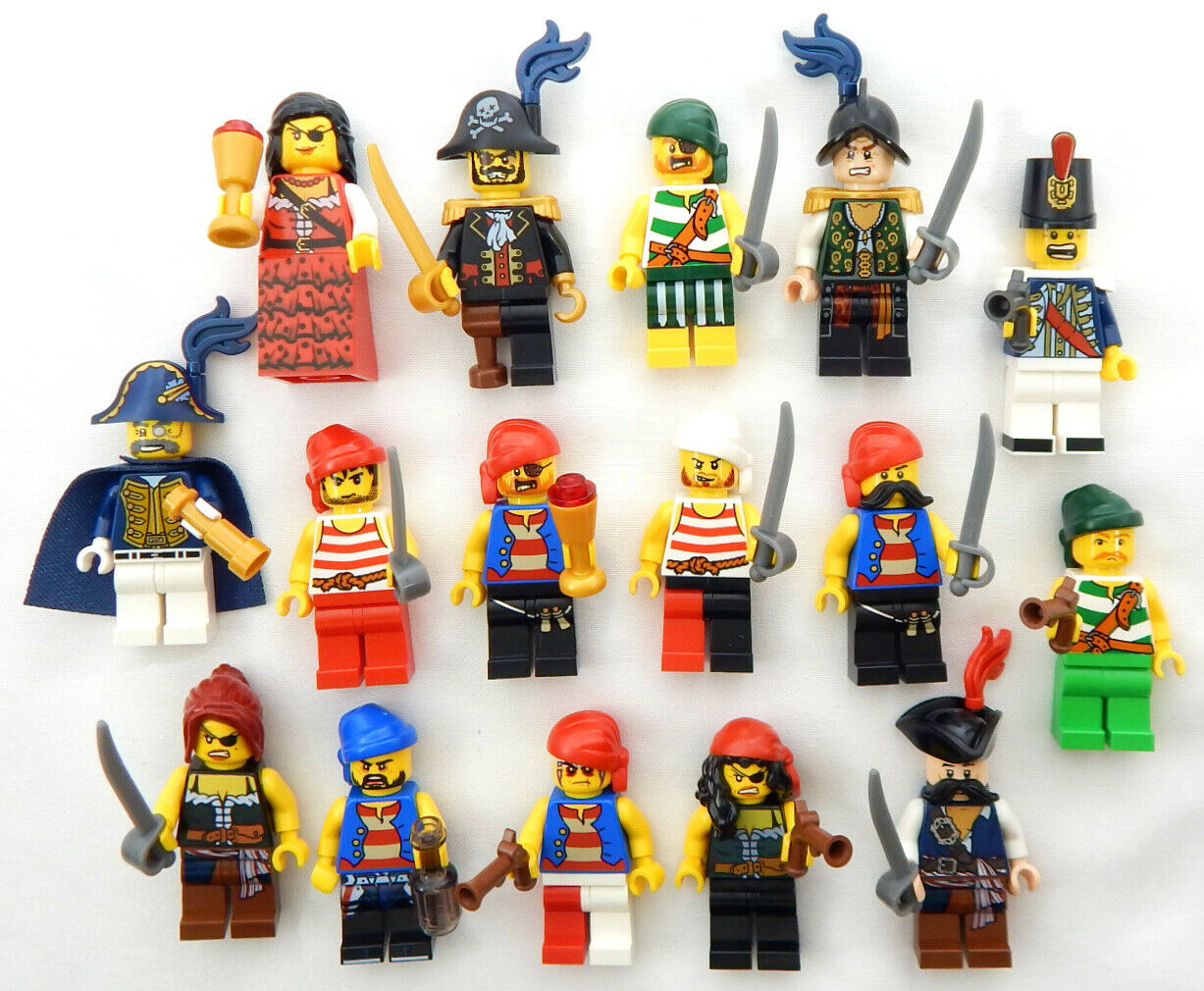
Conclusion
Thanks for sticking with me on this one, what do you think about using LEGO or similar in TTRPGs? Crazy idea or genius?
Hey, thanks for reading - you’re good people. If you’ve enjoyed this, it’d be great if you could share it on your socials - it really helps me out and costs you nothing! If you’re super into it and want to make sure you catch more of my content, subscribe to my free monthly Mailer of Many Things newsletter - it really makes a huge difference, and helps me keep this thing running!
Catch you laters, alligators.
What Makes ‘Ravaged by Storms’ a Standout Pirate Borg Sandbox?
When Golem Productions reached out to invite me to showcase their adventure, I was happy to answer the call.
By JimmiWazEre
Opinionated tabletop gaming chap
TL:DR:
A storm-wracked sandbox, a furious feathered serpent, and a doomsday clock. Ravaged by Storms is Golem Productions’ newest Pirate Borg adventure — a 72-page mini-campaign where factions clash, hurricanes brew, and the Blight Revenant stirs. I really like it, it’s packed with GM tools like a Storm Generator and Ruin tables, but my first look also spotted a couple of quirks. Here’s what stood out to me.
Disclaimer
Similar to last week’s initial exploration of Emergent, I can’t call this a review. I’ve not played it yet you see, coupled with the fact that I’ve only been sent a WIP copy with some missing images etc and haven’t seen the final version.
As ever, I’ve not received a financial incentive to write nice things, but I am a backer of the Ravaged by Storms Kickstarter. When Golem Productions reached out to invite me to showcase their adventure, I was happy to answer the call. As part of this, I fed back a few suggested improvements to Golem Productions, and as such you’ll find me credited in the book :)
The upshot is that despite that very minor minor conflict of interest, you’re gonna be reading my honest first thoughts on an adventure which is mostly finished, and that I quite clearly can’t wait to get my hands on the finished product!
Oh, and whilst I’m disclaiming, this post contains minor spoilers covering the opening setup of the adventure. Cool? Swinging, lets get started.
What is Ravaged By Storms?
OK so, off the back of successful releases ‘The Way of the Worm’ and ‘The Scarlet Coral Kingdom’, brother - sister duo Alexander Jatscha-Zelt and Sabrina Jatscha (Golem Productions) have got yet another Pirate Borg adventure on the stove. ‘Ravaged by Storms’ (RbS), is currently in a live Kickstarter (well, live until 11th September 2025 anyway) and the campaign has already hit a fantastic 426 backers with over £15,000 pledged so far.
Jatscha-Zelt describes RbS as a “72-page mythic sandbox adventure module designed for Pirate Borg… rules-light, art-heavy, and fiercely OSR.“ and he’s pretty much nailed it.
For those unfamiliar with the idea; since it’s a sandbox adventure there’s no middle or end plotted out for you to awkwardly steer your players towards. What happens is totally in their hands. Player. Agency. My dudes.
There is however, a beginning:
In The Beginning, There Was A… (Minor Spoiler Alert, players skip to the next section!)
A millennia or so ago Mesoans settled in an archipelago in the Bahamas of the Dark Caribbean called the Death Wind Islands. With the help of their Coatl allies (serpentine demigods of wind and storm) they go on to build a glorious city housing all their wealth and knowledge.
Hundreds of years later, those Mesoan chaps are long gone - but their crumbling kingdom remains guarded by the last Coatl; Tzoketuapacatl (bless you!). It’s lucky he does too, because during a siege on the city an undead warrior was touched by a local Great Old One’s juicy venom and transformed into (our BBEG) the Blight Revenant, and this chap is hell bent on claiming the Whisperwind Conch.
If the Revenant ever manages to nab it from the city, the result could be extinction-level toxic hurricanes:
Fortunately, Tzoketuapacatl intervenes. Sealing the city, Revenant, and the Conch behind layers of impenetrable magical raging storm prisons. This is seemingly a cunning, nay, foolproof plan with but. One. Small. Flaw…
You see, it all slowly unravels if anyone gets into the city through the back door and yoinks a second magical McGuffin; the Wind Bone Key.
And, well, ‘sugarpuffs!’ Wouldn’t you just know it!? Flash forward to the Golden Age of Piracy and some swashbuckling scurvy dog has only gone and unwittingly done exactly that! Now there’s a six day timer ticking until the Blight Revenant gets his boney hands on the Conch, and to really stick the boot in - Tzoketuapacatl (who is understandably pretty dischuffed with this turn of events!) is going on a bit of a rampage against all the local factions trying to find the Wind Bone key and is tearing everything up in his path.
Unto this scene, enter stage left; our heroes.
Come on, that sounds pretty Saturday morning swashbuckling, right? I’m in.
What’s it trying to Do?
Be A Complete Mini Campaign
RbS is built to run as a 5-10 session adventure. Whilst you could probably run it straight out of the book, I would always recommend familiarising yourself with the content that you need to run an expected session, and making some notes prior to sitting down at the table.
It has a defined opening, a ticking doomsday clock, and enough locations, NPCs, and encounters to sustain a whole arc without having to do much more work than flesh out some of the things given to you should the players actions necessitate it.
Encourage Sandbox Play
There’s no fixed middle or end.
Instead, the module gives you procedures for faction activity, travel, and naval encounters so the world keeps moving around the PCs. The story isn’t pre-written and can only be understood as something that happened at your table in the past-tense, rather than something that the GM dictates will happen.
That’s really key to understanding how to use RbS: The players choose what to pursue, who to side with, and how to spend their six days before everything goes all Sharknado. The module does have a handful of potential ways the campaign might play out listed at the end, but the purpose here isn’t to say ‘pick one’, rather ‘this is just an inspirational small range of the limitless possible outcomes’.
Be Modular
After all that though, if a Sandbox campaign really isn’t your thing, well the module is also pretty damn modular to be honest. You could easily reach inside and tear out the stuff you like, such as the Lifeless City, or Drownmaids Rest to use as one shot adventures, and then adjust the player agency to taste.
What Stands Out To Me?
The Timer
The six day timer is doing two things, firstly, it’s setting expectations that this isn’t going to be a terribly long campaign arc (5-10 sessions), in fact this campaign is going to be perfect for my Pirate Borg campaign as a keyed location to drop in, and that’s how I’d suggest you use it too.
Secondly though, the timer is infusing the adventure with a sense of urgency which is something I find to be critical in keeping the players moving forwards and not getting bogged down trying to fulfil that ‘videogamey’ habit of exploring all paths and getting every achievement… and then consequently robbing the experience of all it’s tension.
The Roaming Coatl
Tzoketuapacatl is a cool monster, no doubt about it. But he serves a meta-function as a chaos generator and a GM safeguard.
I was thinking about this, we’re all human, and even in sandboxes GMs sometimes drift into predicting how things might play out. Once you start imagining outcomes, you risk steering players toward them. The Coatl prevents that.
By rolling for his actions and storms, and including information on how all the keyed locations change in his aftermath, the board state constantly shifts in unpredictable ways. It keeps the GM honest, preserves agency, and if you make the players feel it; I can imagine it injecting fresh tension each new game day.
The fact that Golem Productions has included this meta layer of thinking about how their module should be ran, and how they can make it easy for you to stick to sandbox principles really impressed me.
Sandbox Toolkit
OK, so yeah - the Coatl is very specific to RbS. But there are other gameplay tools that you can add to your broader Pirate Borg arsenal, and that makes it extra valuable:
There’s a Storm Generator that provides you with both descriptive prompts, but also translates these into specific player challenges, and suggests potential consequences for failure. Really useful for making weather more than simple flavour.
A Ruins Generator that lets you roll up some convincing locations for crawling, in case players take a left turn and find themselves somewhere that looks like it could use a dungeon.
Six new rituals from the ‘Squallbinding’ school to give extra magical options for PCs, all focused around the movement of air; wind, speaking, breathing etc.
Faction Play
Every group on the islands has its own agenda: there’s the pirate group; the Phantoms fracturing under Marceau, the West India Company scheming for control, the Bright Maiden’s mercurial ghost crew, the Coatl’s wrath, Peacatatl, and the Blight Revenant.
They’re all written to act and react alongside the PCs, with different motivations which creates shifting alliances and betrayals, again adding to the richness and variety of the campaign’s path at your table.
Nostalgia
It would simply be remiss of me not to mention that the art and descriptions are fantastic throughout. I really appreciated that elements of it grabbed me right in the childhood and transported me directly back to Monkey Island, meeting “Herman Toothrot” and tinkering about with monkeys and suspicious statues. Great stuff!
Potential Friction Points
Terminology Consistency
I especially like how the module uses a similar concise framework to my preferred method when it comes to giving area descriptions, however one of the things I fed back on relates to the consistency of the terminology in these areas. I should stress, mine was a preview copy with final changes yet to be made, but I noticed instances where I was uncertain if more than one distinct noun or proper name for a given element was simply artistic flair, or an indication that there were multiple similar elements.
For example, are “Maritime Beast,” “bone cage,” and “skeletal remains.” all referring to the same giant desiccated animal corpse on the beach, or are there three?
It’s fine to do this for many people, but for me personally it made reading comprehension just that little bit more of a challenge. Having to reread lines, over analysing, self doubt, that question - ‘have I missed something from elsewhere that explains this?’.
I’ll be happy to see this resolved in the final product, with the addition of the last few area maps which will clear this up nicely :)
Intentional Vagueness
Since this is a concise OSR adventure, there’s not pages and pages of lore a la WOTC. That’s not to say lore is absent, but rather that RbS is concise and gives you the minimum to make sure the GM is in control of the important facts. This means you’ll have to improvise if more detail is required.
This is going to work absolutely fine for me as all the main details have been covered and I just need to add some flesh to the bones here and there, but if you’re not comfortable with improvisation then it could be a sticking point for you, and it’s worth knowing, going in.
Navigation
There’s quite a lot of page flipping to be had in RbS, mainly in relation to how one of the broad cast of NPS relates to another regarding factional interplay. The nice thing is that you are specifically told where to flip to though, and you’re not just left to vaguely cast about looking for the relevant section.
I think I would have preferred to see some kind of nodal diagram showing all the different cast members, who they are connected to and how. That could have been up front on a single page and would have meant that I’m not regularly having to flip to elsewhere to get the full picture explained to me.
As it currently stands, this is probably the main reason why I said earlier that the module does still require you to read through and make notes, to make sure that you’re in total command of all the relevant information.
Do You Want To Know More?
Looks like Ravaged by Storms has made a bit of a splash, which is really nice to see.
Over at Thaumavoria, Dave has a nice interview up with Golem Productions, discussing RbS and various design choices.
And Rascal News even has a guest piece up discussing the Kickstarter!
There’s also an interview up on Youtube with Mom’s Open Table and the Kickstarter trailer offers a nice tease:
Conclusion
Obviously, it’s clear that I really like the look of Ravaged By Storms. I think it’s going to be an excellent option for inserting into my wider PB campaign. On top of that, you know I’m going to be lifting those GM tools straight out and putting them to use more broadly.
How about you though? Do you think it looks interesting? What would you like to see form a module like this? Answers in the comments below as always :)
Oh, before I forget - If you want to get in on the kickstarter, head over to the campaign in time for the final push before September 11th and grab yourself a slice of the action.
Hey, thanks for reading - you’re good people. If you’ve enjoyed this, it’d be great if you could share it on your socials - it really helps me out and costs you nothing! If you’re super into it and want to make sure you catch more of my content, subscribe to my free monthly Mailer of Many Things newsletter - it really makes a huge difference, and helps me keep this thing running!
Catch you laters, alligators.
How I’m Laying The Foundations Of A Great Pirate Borg Campaign
I’ve just finished running the Lost Mines of Phandelver (my thoughts on that will be up soon) and one of my players, Chris, is going to be taking up the GM mantle again in November to run us through Curse of Strahd. This gives us just a couple of months of palette cleansing time.
By JimmiWazEre
Closeted Pirate. With many opinions on tabletop games.
TL/DR:
Pirate Borg grabbed me like a sea curse and hasn’t let go. Here’s a look at how I’m preparing my first campaign
Why Pirate Borg?
I picked up Pirate Borg (PB) on a whim after seeing a few favourable reviews on YouTube, I was out of town and in a LGS and there it was. It’d have been rude not to. Scanning through it on the train journey home I was really pulled in with it’s evocative vibes and rules-lite grounding. I was reminded of the old Monkey Island games I used to play on the Amiga.
It’s consumed me! I’ve gone in deep down the special interest hole, consuming every piece of quality pirate content I can find:
Pirates of the Caribbean: The Curse of the Black Pearl (the rest are varying degrees of beautiful garbage - fight me!)
Black Sails on Netflix
The Lost Pirate Kingdom (a short docu-drama series on Netflix)
The Pirate History Podcast on Spotify
Real Pirates Podcast on Spotify
The Republic of Pirates by Colin Woodard
On Stranger Tides by Tim Powers
Countless YouTube videos on the differences between Sloops, Brigs, and Frigates - fore and aft sails vs square rigged sails, how they work. What a “Jib” is. Blackbeard, Benjamin Hornigold, Black Sam Bellamy, Charles Vane. The list goes on, and I love it all!
I especially love the idea of taking all that and then smushing it with other cool things like: the legend of Atlantis, El Dorado, Voodou, Necromancy, Cultists & Cosmic Horror, the Bermuda Triangle & mother trucking big assed beefy sharks! Anachronisms be damned!
Awesome. I have a very good feeling about this!
Structure & World Building
I’ve just finished running the Lost Mines of Phandelver (my thoughts on that will be up soon) and one of my players, Chris, is going to be taking up the GM mantle again in November to run us through Curse of Strahd. This gives us just a couple of months of palette cleansing time, so I’m thinking that sandbox style campaign is the way to go. Fortunately, PB seems to have been built with that in mind.
The developer, Limithron has provided a free campaign hex map of the “Dark Caribbean” and alongside the multitude of official and third party modules, this means that you can just feed the players rumours for one of these modules, and then drop it in as an adventure site in one of the hexes. That’s exactly how I’m doing it anyway.
The Dark Caribbean Campaign Map
Here’s one of the official maps that I’ve relabelled to be player facing, and drawn shipping lanes all over it so that players can make informed decisions about where the best pirating might be found. The GM version of this contains spoilers so I won’t be posting it here, but it’s basically this with a load of adventure sites keyed in.
Campaign Setting
PB comes with a framework of fictional history for you to work with. For my campaign, I’ve taken this and built upon it, whislt still keeping it fairly abridged. There’s a version that’s GM facing, containing facts for the players to maybe find out if they’re interested, and there’s also a common knowledge version (below) that the players will have access to from the start.
Known Facts
It is end of the beginning of the 18th Century. The so called ‘Golden Age of Piracy’ is almost over.
As foretold by the Voodou shamans - the dead have risen. Sailors and settlers vanish. Graves are empty. Ships return crewed by corpses.
A strange white powder called ASH is the most valuable substance in the region. Some use it as a drug, others for occult rituals. It's the main reason anyone still braves the Caribbean, and it’s harvested from the burnt remains of the undead.
The sea has opened up a yawning abyss South West of Cuba, darkening the sky above and inspiring terror throughout the region.
The pirate republic of Nassau still holds out, but barely. It’s one of the last ports free from colonial authority.
Familiar Rumours
An Old Stone Church in Havana is ruled by fanatics. They chant to a “Deep God” and claim death is not the end.
The mythical city of Atlantis has risen in shattered pieces from the Bermuda Triangle. Relics from its ruins fetch a fortune, and many who seek them go mad.
Additionally, strange golden artefacts have found their way to market, which the antiquarians have traced to the lost city of El Dorado.
Blackbeard; the legendary pirate of Nassau was thought dead - killed by the British Navy. But somehow, he’s returned. He is changed; undead, terrible, and now commands a fleet of the dead laying waste to everyone in their way.
Sailors whisper of a lone tribal figure, seen in jungles or cliffside ruins, never speaking, never ageing. His arrival always precedes catastrophe.
Conclusion
So there we go. If you’re one of my prospective players - I hope this tickles your pickle. If you’ve just stumbled upon this, I hope you can find inspiration in some of this.
Hey, thanks for reading - you’re good people. If you’ve enjoyed this, it’d be great if you could share it on your socials - it really helps me out and costs you nothing! If you’re super into it and want to make sure you catch more of my content, subscribe to my free monthly Mailer of Many Things newsletter - it really makes a huge difference, and helps me keep this thing running!
Catch you laters, alligators.
6 Games that nail What Rules-Lite TTRPGs Should Be
A good rules-lite system doesn’t overwhelm you with procedures and crunch for every situation. Instead, the key procedures are covered and it gives you a clear, concise core mechanic. Then it trusts you to apply it flexibly.
By JimmiWazEre
Opinionated Tabletop Gaming Chap
TL;DR - Rules-lite isn’t the same as rules-incomplete or rules-inconsistent. Don't conflate them.
This post contains affiliate links.
Introduction
I want more people to play Rules-Lite games, but this crusade of mine is hindered by a misconception of what a rules-lite game actually is.
A lot of people hear "rules-lite" and think "lazy" or "half-finished." But that’s missing the point entirely. A great rules-lite RPG isn’t undercooked, it’s efficient, elegant, and focused. Let’s unpack what makes a minimalist system actually good, and why "less" doesn’t mean "worse."
What Is Rules-Lite
A good rules-lite system doesn’t overwhelm you with procedures and crunch for every situation. Instead, the key procedures are covered and it gives you a clear, concise core mechanic. Then it trusts you to apply it flexibly.
It’s just like that old saying:
Give a GM a fish, and they can run a session. Teach a GM to fish, and they can run a campaign.
Or something like that. I don’t know, it's close enough.
What isn’t Rules-Lite?
Let’s be crystal clear, rules-lite is very different from rules that are simply incomplete or inconsistent.
Inconsistent rules happen when a mechanic is explained more than once but the explanations don’t match. This usually signals a rushed edit. One version may or may not have replaced the other, but both made it to print. That’s not planned ambiguity, rather it comes over as just poor proofreading.
Designers: please, if someone flags this, don't try to convince us that you’re providing options. No one's falling for it, just own it and issue a FAQ or errata.
Incomplete rules are when a mechanic is introduced but not fully defined. For example, a game might explain how to hit an enemy in great detail… but never actually explain how damage works. You can’t convince me that this is minimalist design, it's just frustratingly half baked rules - because now we know that there is a specific way that this should be done, but we’ve no idea what it is.
RAI Matters
It all comes down to understanding the Rules as Intended (RAI). If the designer has said enough to give the GM an understanding of the game’s core rules language, then the GM should be confident that they can make a ruling that falls in line with RAI. If not, flesh it out some more.
Gameplay examples are great for this, as are developer commentaries in the sidebar. Designers take note!
Experience matters
I'm a big fan of the rules-lite philosophy, but if you've never run a TTRPG before, there is a danger that you might not have developed that muscle yet which allows you to make rulings up on the spot that feel consistent with the game system. Just bear that in mind before you pick your first game.
That’s not to say that a rules'-lite game shouldn’t be your first, but rather that I just want to make sure that your expectations are managed. It may start difficult, but it will get easier as you go on.
Recommendations
If you’re interested in picking up a good rules-lite game, then I’ve got a short curated list for you of some of my personal favourites. Full disclosure though my dudes, some of these are affiliate links, and if you chose to pick one up using the links provided, then I’ll get a small kickback at no extra cost to you.
Mausritter
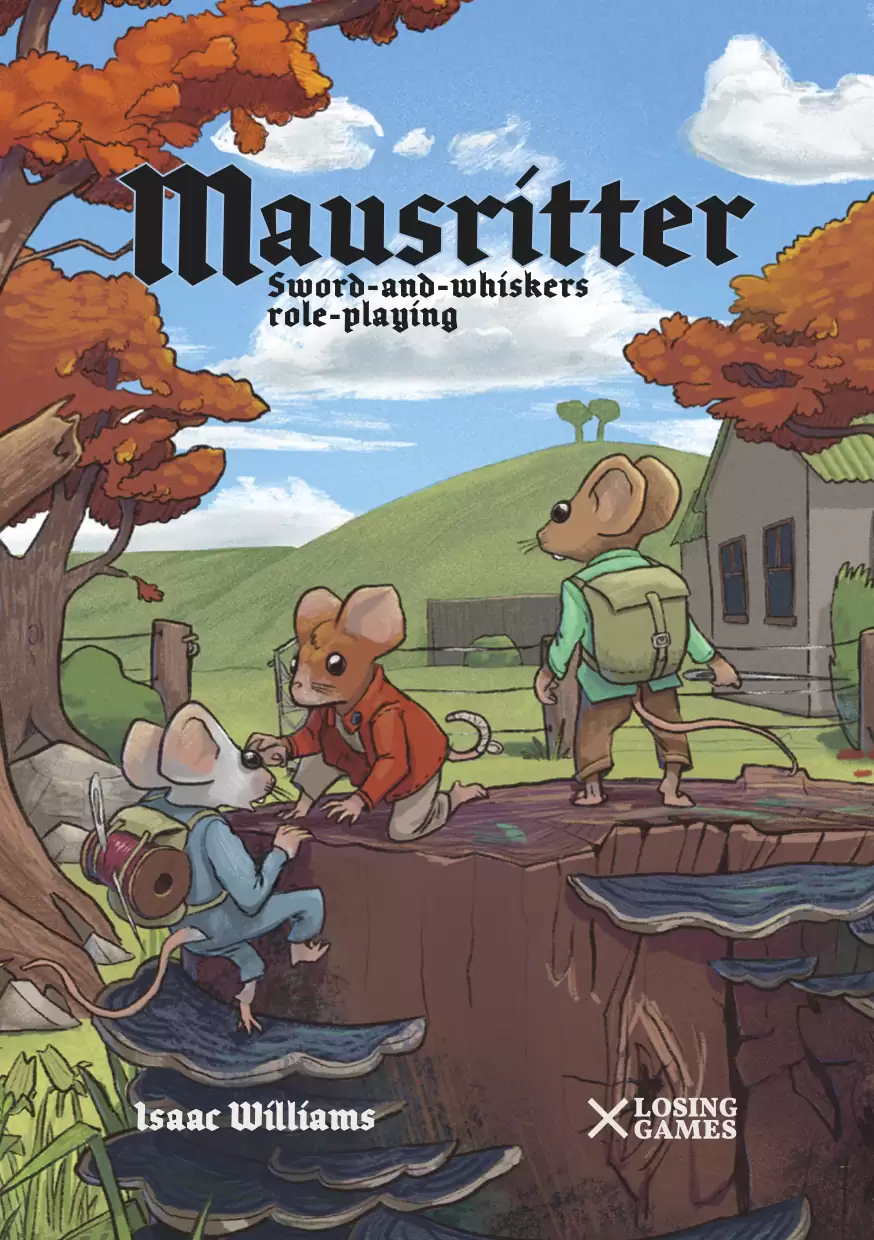
Mausritter is a charming, rules-lite fantasy RPG where players take on the roles of brave little mice in a big, dangerous world. Built on Into The Odd, an OSR style framework, it uses simple d20 roll under mechanics and item slots for inventory, making it quick to learn and run. Its elegance lies in its ability to deliver rich, old-school adventure vibes with modern usability and 1990’s Disney cartoon flair.
I played in a duette game of this with my wife at the kitchen table, and she really enjoyed the vibes. With tweaks to the lethality I can see this being really popular with young families too.
Index Card RPG
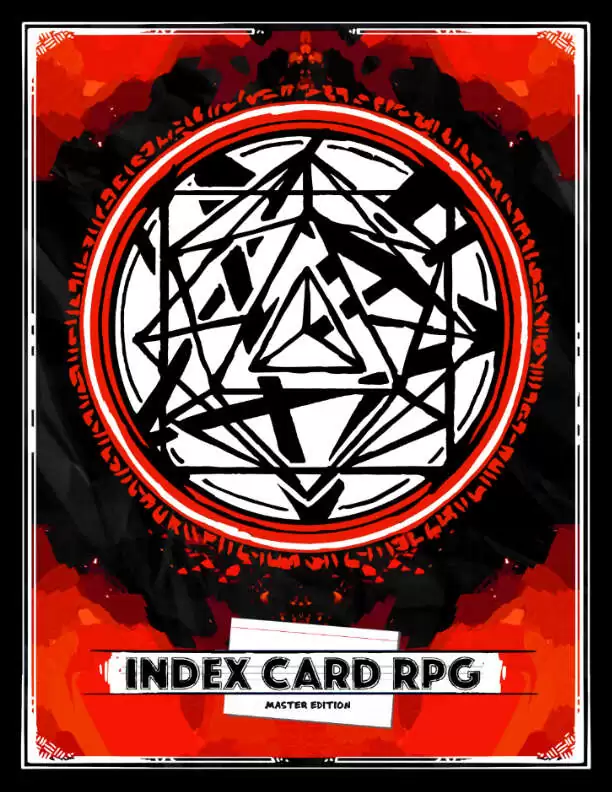
ICRPG strips tabletop roleplaying down to its essentials with fast, flexible rules that encourage creative problem-solving and dynamic pacing. Everything runs off a single target number per room or scene, making it intuitive and highly adaptable. Its modular design and DIY ethos make it perfect for GMs who like hacking and building custom worlds on the fly.
EZD6
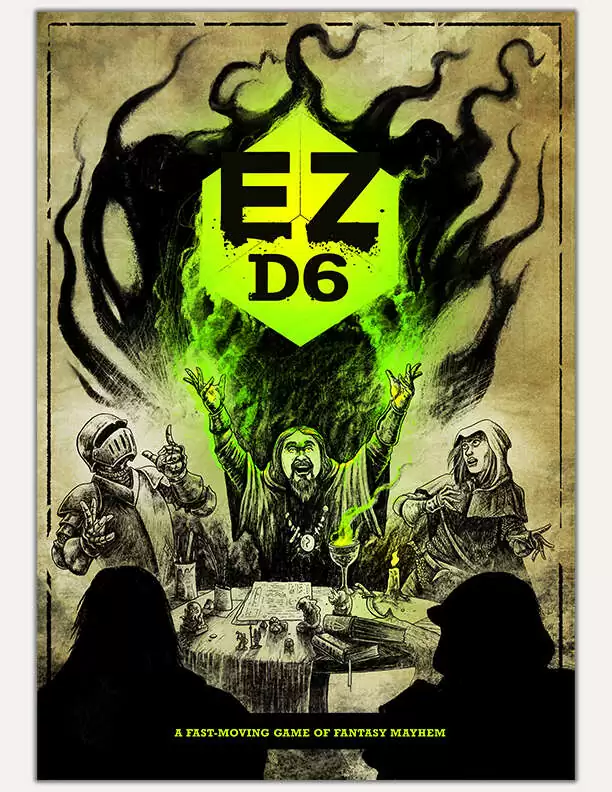
Created by DM Scotty, EZD6 lives up to its name with a system that’s incredibly easy to pick up and play. Most rolls come down to a single d6 against a target number, streamlining gameplay while leaving plenty of room for dramatic moments. It’s especially good for narrative-driven groups who don’t wanted to be limited by predefined abilities on their character sheets, and instead want to freedom to narrate their abilities as they see fit.
One of my players who’d never GM’d before in her life ran a couple of us through a homebrew adventure using this system and it was an absolute blast.
Pirate Borg

Pirate Borg is a brutal, rules-lite game of swashbuckling horror on the high seas. Inspired by Mörk Borg, it mixes fast, deadly mechanics with punk rock layout and evocative setting material. It’s ideal for players who like their pirate adventures with a side of doom, decay, and dark magic, and who don’t mind their characters dying spectacularly.
The squint-and-it’s-historical side of this game has literally made me buy pirate history books and start listening to pirate podcasts. I love all that stuff now, and it takes me back to my childhood - playing Secret of Monkey Island on my big brother’s Amiga. Good times.
GOZR
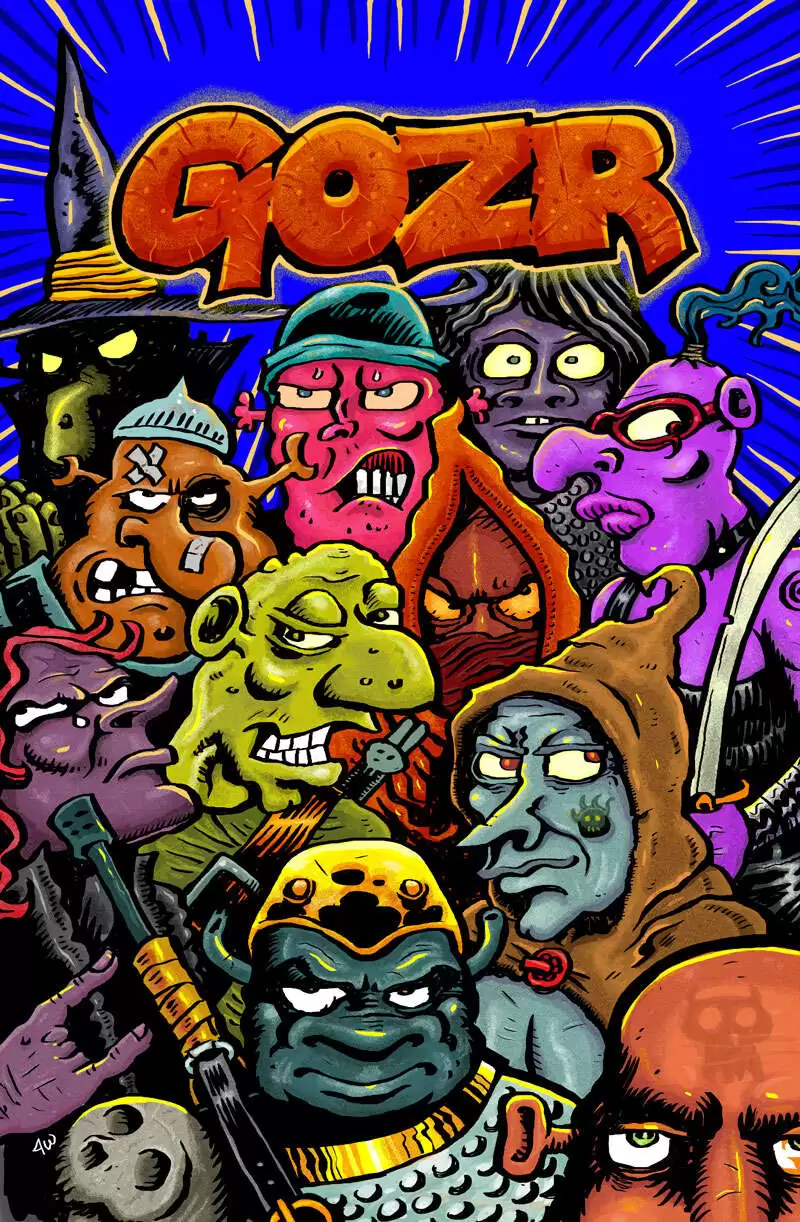
GOZR is a wild, gonzo sci-fantasy RPG that feels like it escaped from the back of an '80s metal album cover. It runs on a straightforward d20 roll-over system and embraces weirdness at every turn, from its mutant characters to its DIY zine-style aesthetic. It's brilliant for groups who want something fresh, funky, and full of chaotic creativity without a ton of prep.
I also wrote an opinion piece for this game a few months ago which included a free system cheat sheet that I’d worked on with the help of the games designer to get players started sooner. Can’t recommend it enough!
Spellz!
Indie developer, Jake Holmes recently reached out to me on Bluesky with an interesting little one page rules-lite game he was working on called SPELLZ! The game is still in it’s beta testing phase and he’s taking feedback on it it, but for the price of totally free, and for the sake of reading less than a single page - it’s definitely worth a look in if you want to see just how lite the rules can go!

It’s a fast TTRPG where magic is improvised in real time using letter tiles. Players draw tiles and try to form words on the fly — the word they create becomes the spell, and its effect is narrated accordingly. Stronger or stranger words often have bigger effects, and failed spell attempts can backfire spectacularly, with the GM repurposing your discarded letters.
I’ve not played it, but I have given feedback on the rules which was promptly actioned. It looks quick, and perfect for creative groups who enjoy thinking on their feet, might even be a way to introduce TTRPGs to your mum, dad, and nan who’s idea of a tabletop game otherwise begins with crosswords and ends with Scrabble!
Heya, just a thought, if you want me to take a look at your game and feature it on the site, like SPELLZ! Then drop me a message, lets have a chat!
Conclusion
The key message here is that if you've been frustrated by rules-incomplete or rules-inconsistent in the past, please don't be put off a rules-lite system because you're assuming it's the same thing. It ain't. If you get overwhelmed by books the size of a university textbook and you want to start small, rules-lite could be for you.
And so endeth the sermon.
Hey, thanks for reading - you’re good people. If you’ve enjoyed this, it’d be great if you could share it on your socials - it really helps me out and costs you nothing! If you’re super into it and want to make sure you catch more of my content, subscribe to my free monthly Mailer of Many Things newsletter!
This post contains affiliate links.



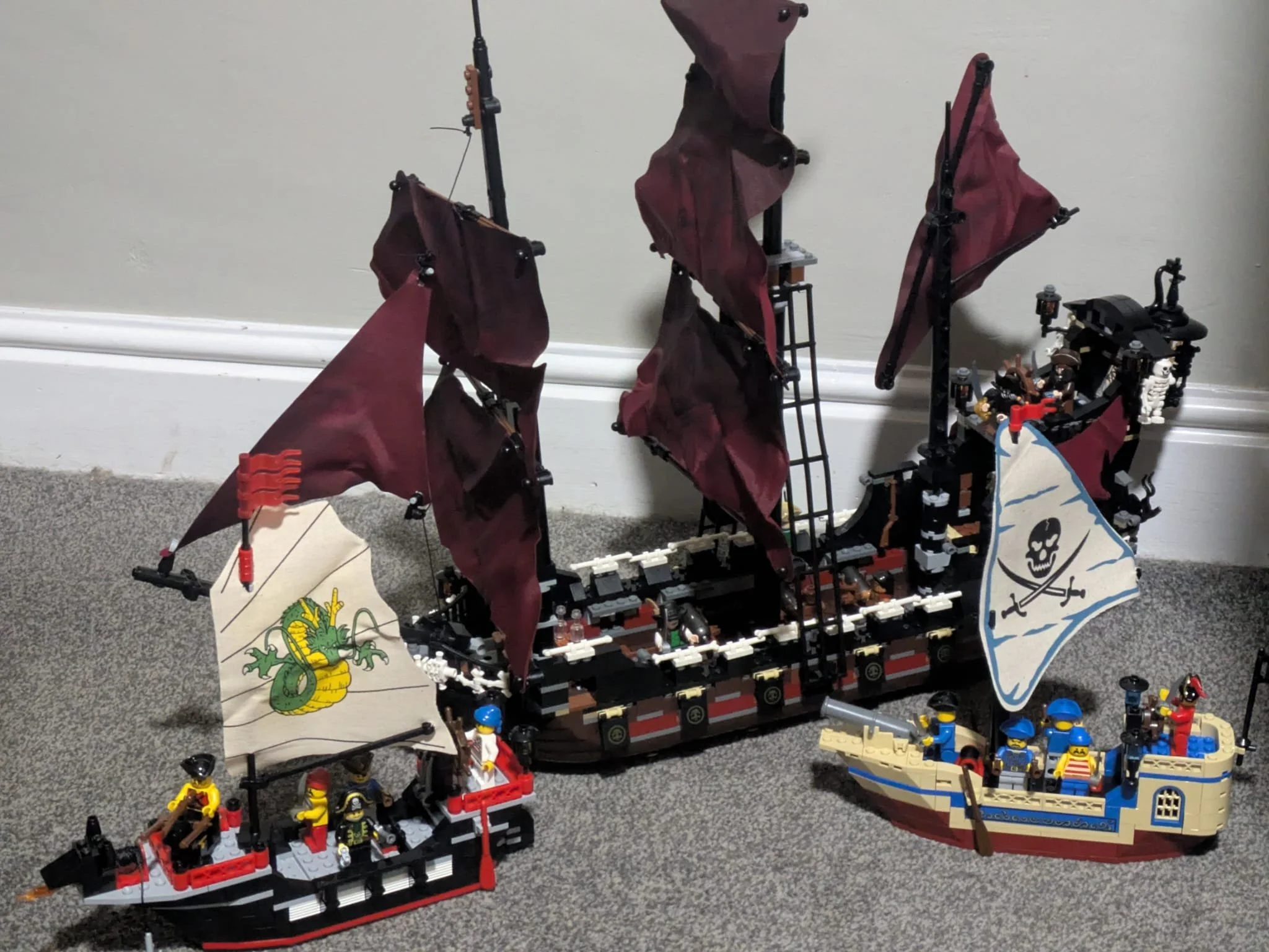







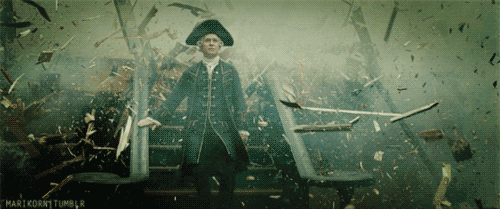









Whether you play TTRPGs or miniature war games, sooner or later you might want some fantasy terrain. This piece is about where I get my terrain from and how I paint it using simple and fast methods.